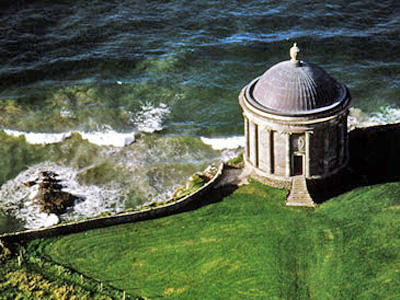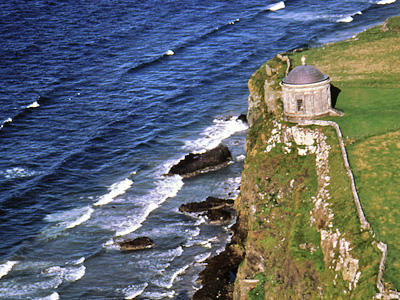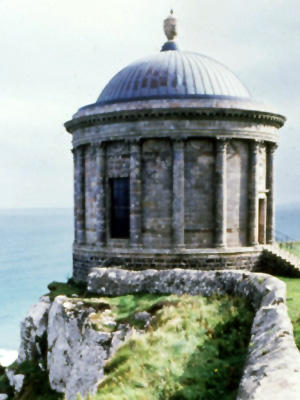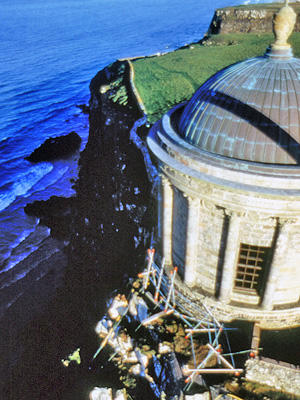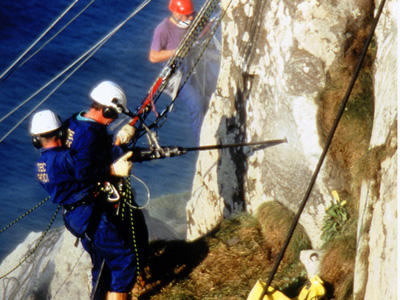Mussenden Temple
The Downhill estate was constructed in the late eighteenth century for Frederick Hervey, the Bishop of Derry and Earl of Bristol. One of the buildings constructed on the property was Mussenden Temple, a library modeled on the Temple of Vesta in Tivoli. Perched dramatically at the edge of a basalt cliff on the coast of Ireland east of Derry, the perilous location and design of Mussenden Temple embodies many of the aesthetic ideals of the philosopher Edmund Burke’s A Philosophical Enquiry into the Origin of Our Ideas of the Sublime and the Beautiful. Burke envisioned a sublime experience from the violent passion caused by confronting terror and the pleasurable knowledge that the danger is only an illusion. He also believed in the mutual exclusivity of beauty and nature. The temple was inspired by grandeur as opposed to elegance. Vast and awe-inspiring views of the harsh headland create a sense of uncertainty, dread, and mystery. The appeal of this “delightful horror” is reflected in the inscription around the dome of the temple: “Tis pleasant, safely to behold from the shore/ The rolling ship and hear the tempest roar.”
1998 World Monuments Watch
Over the centuries, since the construction of Mussenden Temple, coastal erosion has caused the cliff supporting the structure to recede by as much as 30 feet (10 meters). When the temple was included on the 1998 World Monuments Watch, it was only inches from the edge of the precipice and in imminent danger of collapsing into the sea. The National Trust conducted a feasibility study in 1997 to assess the conditions of the rock and establish short and long term plans to secure the historic structure. WMF provided essential funding for phase two of the stabilization project, which included all the main cliff strengthening. WMF supported the supply and installation of anchors used to stabilize large blocks of the cliff. Conservators installed numerous rock anchors, bolts, and dowels to stop erosion and secure the escarpment. Cavities and large fissures on the cliff face were filled with pigmented mortar and local basalt. In 1998, the historic temple was secured and markers were place on the cliff face to allow for regular inspections and monitoring of the erosion. The cliff stabilization efforts secured the foundation of the temple for at least another century.
Frederick Hervey was one of the most colorful characters of eighteenth-century Britain. He was known for his wicked sense of humor, and there are tales of races run by fat and lean clergy after grand dinners at the Downhill estate. However, the Earl-Bishop’s numerous eccentricities were accompanied by a genuine commitment to political, economic, and religious change. A liberal nationalist, Hervey promoted public works for unemployment relief and bravely espoused the cause of the oppressed Catholics, even allowing his Catholic tenants to say Mass in the crypt of the Mussenden Temple, despite being a protestant bishop. The landscaped estate, gardens, and buildings at Downhill reflect the vivid personality of their creator. Today, the secured temple, surrounded by striking ruins of Downhill House and sheltered gardens, is licensed for civic weddings and is occasionally used for musical and dramatic events. Mussenden Temple is one of the most photographed monuments in Northern Ireland and is a crucial part of its late-eighteenth-century built heritage.

